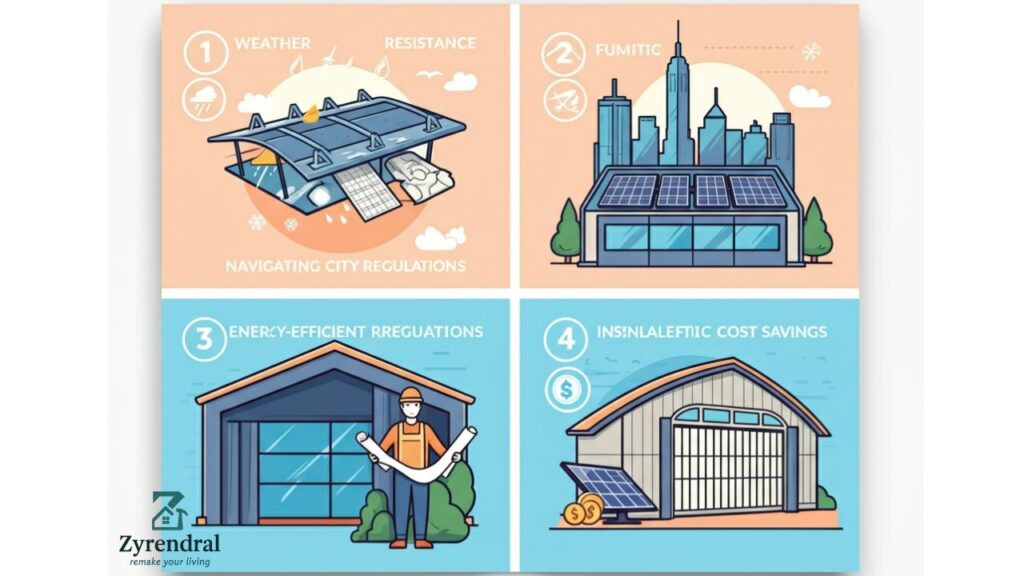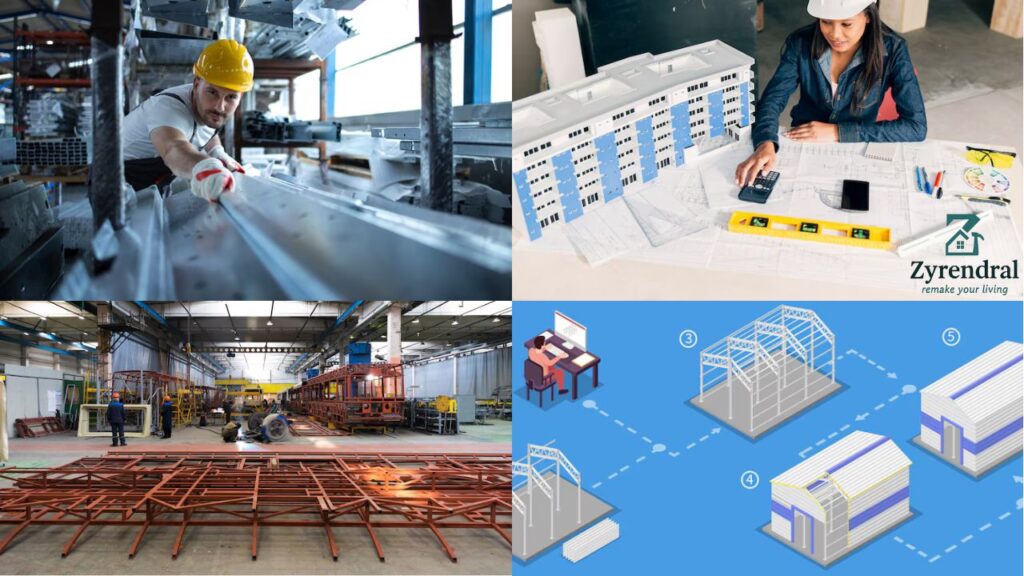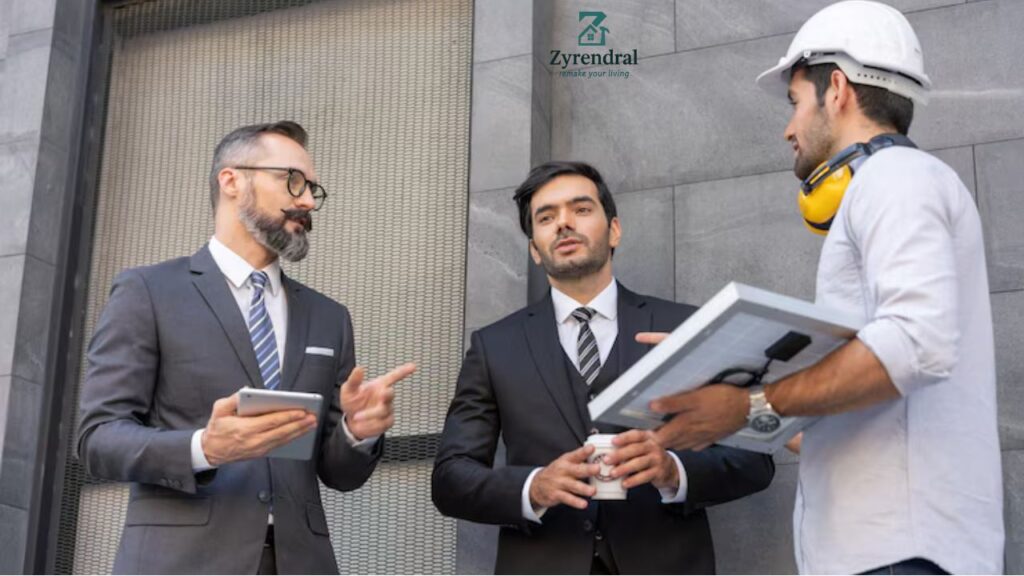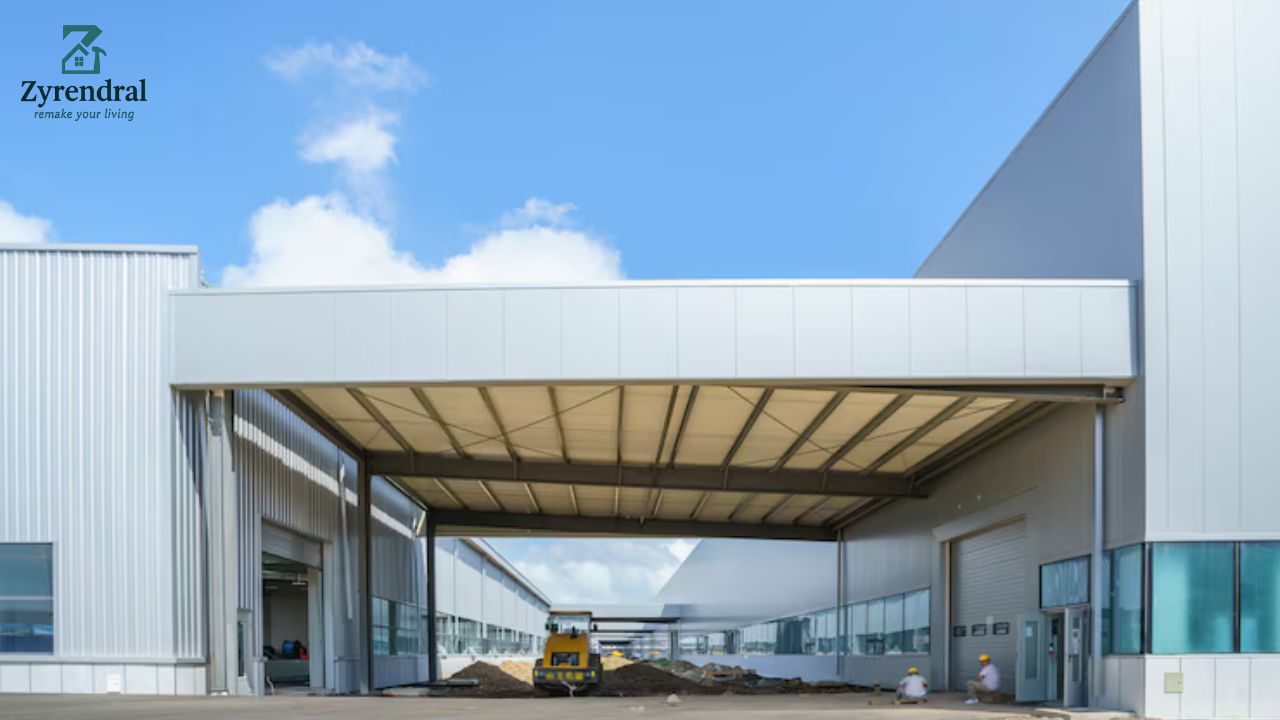Hangar roof constructionNYC is a competitive field where functionality, compliance, and durability converge to support aviation and industrial needs. Being tasked with safeguarding aircraft through New York City snowstorms, even the installation of a hangar roof calls for precision planning, suitably chosen materials, and the hands of consummate craftsmen. Be it a new construction or the refurbishment of an existing facility, this guide offers vital guidance on the process and the enduring advantages of executing a hangar roof installation efficiently.
Table of Contents
ToggleWhy Hangar Roof Construction Matters
In the pursuit of aircraft housing, hangars go well beyond serving as simple storage spaces. They play an essential role in safeguarding multi-million-dollar assets from the elements, guaranteeing operational readiness, and even helping to boost energy efficiency. Rooftops, constituting the structure’s frontline defense, should provide the strength to withstand the proof of time, New York City’s seasonal extremes, and unforeseen calamities.
A major consideration in hangar roof construction is choosing building materials. It is here that steel buildings shine. Endowed with superior tensile strength and an unmatched resistance to wear and corrosion, steel function as the spine for many hangar roofs. Selecting the right roof is, in fact, an investment in the long-term sustainability of the structure.
Summary Table
| Feature | Details |
|---|---|
| Average Cost | $50–$120 per square foot |
| Average Size of Hangars | 5,000–30,000 square feet |
| Popular Materials | Steel, aluminum, and insulated metal panels |
| Construction Time | 4–12 months |
| NYC-specific Considerations | Snow loads, hurricane codes, and zoning regulations |
Challenges Unique to NYC Hangar Roof Construction

Erecting hangars in New York City introduces distinctive challenges that reach well beyond normal construction obstacles. Vital elements to help convert ideas into reality include:
- Weather Resistance
Varying weather in NYC—from blizzards in winter to scorching summer heat—demands the incorporation of durable roofing systems. Achieving long-term resilience can be attained solely through architectural solutions such as reinforced steel roofs, which deliver superb wind resistance and drainage to counteract heavy precipitation.
- Liquidation of City Regulations
Journeying through NYC’s rigorous building codes is no mean task. Adhering to compliance calls for satisfying zoning criteria, complying with wind load standards, and employing eco-friendly construction processes. Working alongside contractors already well-versed in these regulations expedites the process, wards off penalties, and instills a secure management approach.
- Energy-Efficient Cost Savings
Soaring energy expenses in NYC are driving contractors to incorporate practical solutions for insulation and passive climate control. Over the sprawling service life of the hangar, roofing options that incorporate features like reflective coatings, insulated panels, or solar array systems greatly diminish monthly utility expenses.
- Aesthetic Appeal
In NYC’s modern-architecture districts, industrial buildings must likewise preserve a polished façade. Function-oriented aesthetics that integrate visual appeal into their design garner wider and more favorable acceptance from regulatory bodies.
Construction Methodologies and Materials

In hangar roof design, a “one size fits all” strategy simply does not work. Choosing suitable materials and methods paves the way for strength, efficiency, and lasting performance.
- Steel Roofing Systems
Owing to its exceptional durability, steel has become the roof material of choice for NYC hangars. Steel that is coated or galvanized averts rust and delivers superior protection against fire, impact, and severe weather events. Thanks to its minimal upkeep, it bests other options in overall cost over the full life cycle.
- Clear-span Roof Systems
Clear-span structures—widely applied in hangars—remove interior columns, yielding a fully unobstructed interior space. Such openness is vital for housing wide-bodied aircraft and for boosting operational efficiency over the long term.
- Enhanced Energy-Efficient Insulation
Over the long term, a facility’s usability hinges on its climate control systems. Energy-efficient alternatives such as insulated metal roof panels help cut electricity expenses, particularly in a city where both heating and cooling costs are at a premium.
- Integrated Solar Panels
Sustainability sits at the forefront of the patterns guiding NYC’s building sector. Installing solar panels on hangar roofs lessens ecological impact and delivers financial returns through the generation of renewable power.
Choosing the Appropriate Contractor in NYC

Engaging the right contractor can make the entire difference. Concentrate on local contractors who are fully familiar with New York City’s stringent building regulations. Seek the following qualities:
- Verifiable Experience
Engaging contractors that concentrate on steel building solutions and bring extensive aviation experience meets the unique requirements of hangar projects.
- Regulatory Knowledge
Overseeing a project through NYC Department of Buildings’ codes guarantees compliance and reduces the disruption associated with inspections.
- Considerable Client Testimonials
Examine project testimonials and past endeavors to validate their quality and reliability.
Long-term Maintenance Tips
Maximize the lifespan of your hangar roof and protect your investment by adhering to these best practices:
- Carry out routine inspections to identify any evidence of wear, corrosion, or leaks.
- Maintain gutter and drainage systems free of blockages to avert water buildup.
- Apply protective coatings every several years to preserve thermal and weather resistance.
- Arrange regular professional evaluations to assess buildings’ structural components that have been shaped by NYC’s climate over the years.
Costs versus Value
Depending on the size and complexity, hangar roof construction in NYC can vary in cost. While premium steel roofing systems demand larger upfront expenditures, they yield substantial long-term gains through minimal maintenance requirements and enhanced energy efficiency.
For instance, swapping out a worn wooden roof for an insulated steel counterpart can substantially trim heating costs, particularly during NYC’s frigid, snow-laden winters, and translate into measurable returns within just five years.
Real-World Success
Let JFK International Airport serve as an illustrative case in point. By adopting cutting-edge roof steel structures, they illustrate the advantages of hardy roofing that endures the harsh weather of NYC. These investments have demonstrated resilience against hurricane-force winds and heavy snowfall, guaranteeing the safeguarding of aircraft and operations even amid harsh conditions.
Partnering with Reliable Resources
Safeguard your project’s success by recognizing the critical role that domain authority plays when generating backlinks. Establishing links with dependable sites, such as uslegalforms.com and tulsatoday.com, equips NYC contractors and project managers with extra insight and exposure when they undertake intricate hangar construction projects.
Cost Breakdown Table
| Service/Material | Cost (Approx.) |
|---|---|
| Steel Roof Panels | $20–$50/sq. ft. |
| Insulated Roofing Systems | $30–$70/sq. ft. |
| Contractor Labor | ~$50/hour |
| Permits and Architectural Approval Fees | $5,000–$20,000 |
FAQs
1. What is the average lifespan of a hangar roof in NYC?
A properly constructed roof using steel panels can last 40–50 years, depending on maintenance and material quality.
2. How much does weather impact hangar roofs?
Severe weather like snowstorms and hurricanes can pose risks if the roof is not designed for these conditions. Ensuring compliance with NYC’s structural codes is essential.
3. Are there eco-friendly options for hangar materials?
Yes! Solar roofing and recycled steel panels are both sustainable and efficient options for hangar roofs.
4. Can I retrofit an older hangar roof?
Absolutely. Retrofitting allows you to reinforce existing structures with newer, more durable materials, improving both functionality and compliance with modern standards.
5. How do I choose the right contractor?
Look for contractors with experience in NYC, familiarity with local regulations, and strong client reviews to ensure a smooth and compliant construction process.
Final Thoughts
Whether constructing a brand-new hangar or improving an older structure, hangar roof construction in NYC demands a thoughtful approach that prioritizes weather resistance, regulatory compliance, and long-term savings. Investing in reliable materials such as steel and joining forces with seasoned contractors will ensure you obtain a strong, efficient, and compliant structure that faces the city’s challenges while sparing you time and expense down the road.
Admin Recommendations
Discover Zyrendral’s Hidden Magic: A Traveler’s Paradise







